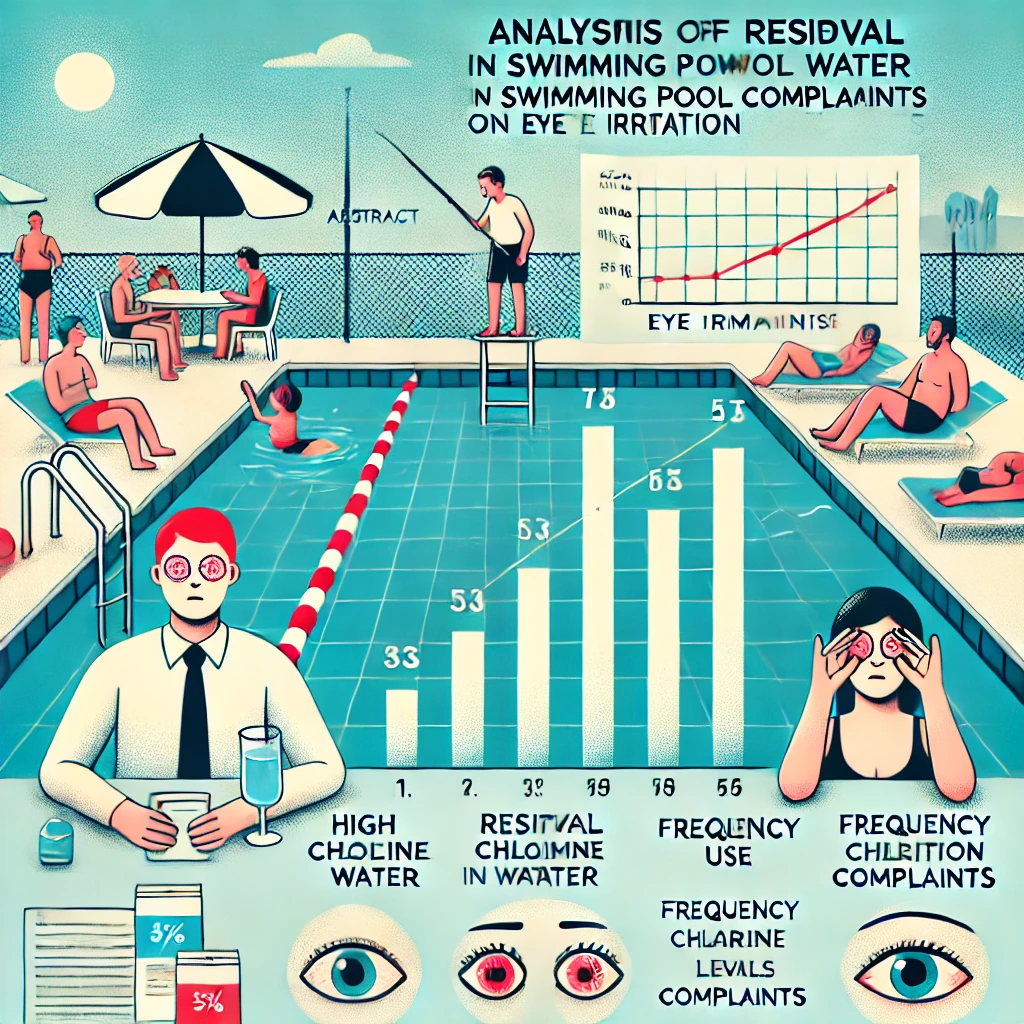Analysis of Residual Chlorine Content in Swimming Pool Water on Eye Irritation Complaints

Downloads
Residual chlorine is a residue from the chemical compound chlorine, which is used as a disinfectant in swimming pool water. When in contact with the eyes, these chemicals can cause conjunctiva inflammation, known as conjunctivitis. Symptoms include redness, swelling, pain, and itching in the eyes. Research purposes analyzing the effect of residual chlorine content in swimming pool water on complaints of eye irritation in swimming club members. The type of research used is analytical observational with a cross-sectional approach. The research subjects were visitors to swimming pools in the Surabaya area using purposive sampling. The data collection techniques were questionnaire sheets, observations, and laboratory results. Data analysis used the Spearman Correlation test. The results showed that water pH was a protective factor for residual chlorine in swimming pool water with a value of (PR < 1), and Alkalinity was a protective factor for residual chlorine in swimming pool water with a value of (PR < 1). There was no influence of residual chlorine on complaints of eye irritation with a value (pv = 0.602). It is recommended that swimming pool managers install information boards that guide swimming pool cleanliness and ethics. They have added soda ash to stabilize the pH. Future researchers can examine other factors that influence complaints of eye irritation and residual chlorine content.
Copyright (c) 2024 Marcella Ezra Adila Rosari

This work is licensed under a Creative Commons Attribution 4.0 International License.



















